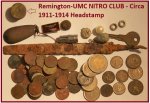Well, it's very simple to navigate around the different programs, frequencies and other settings. The "mode" button is strictly for the different preset modes, including a programmable mode. Plus, as all the previous GTI, ACE, and AT Models, you can notch out any selected target(s) you choose. The menu button gets you to the frequencies choices, sensitivity, iron audio, volume, back light etc. Using the "+" and "-" buttons allow you to go to 5, 10, 15,20,MF KHz and salt mode. Iron audio is available in all modes, should you want to use it, and always adjustable. You can turn it off with the push of a button.
The recovery speed on the APEX is fast, and fixed. I found a couple of common US dimes and as I figured, the APEX banged very hard on them. I also tried a US quarter, and as I guessed, it also hit hard. For Canadian coins, hunting with the iron audio turned on to a comfortable audio level, and listening for both the iron "grunt" along with the high pitch alerts you to a dime, some nickels and a quarter. Some nickels will read in the low 50's with a steady sound. Pull-tabs generally read a strong double beep in the low 50's. Deep pull-tabs will not always give a double beep. Beaver tail pull tabs read in the mid 50's with a nice sounding audio. If you don't dig them, you could miss out on a nice gold ring.
I got a silver Canadian quarter with a VDI of 83, and buried it vertically in the ground. I did get an audio reading in all directions swinging the coil, however, the audio tones varied considerably. Swinging the coil over the quarter with it orientated in a parallel position to the center of the coil, gave a distinct double beep high tone. When swinging the coil over the coin with it lined up in a perpendicular aspect to the center of the coil, it gave a mid tone sound bouncing around in the mid 50's. I could not make the audio disappear completely at any particular swing direction. The top of the silver coin was down 1/4" in extremely wet soil.
Below are my finds including some hunts in the woods and parks. I am still learning the APEX. Adjusting the operating frequency makes a substantial difference when hunting for low conductors vs. high conductors. For general hunting in parks, I used the multi-frequency mode.
If you like the ACE machines, you are definitely going to love the APEX.





